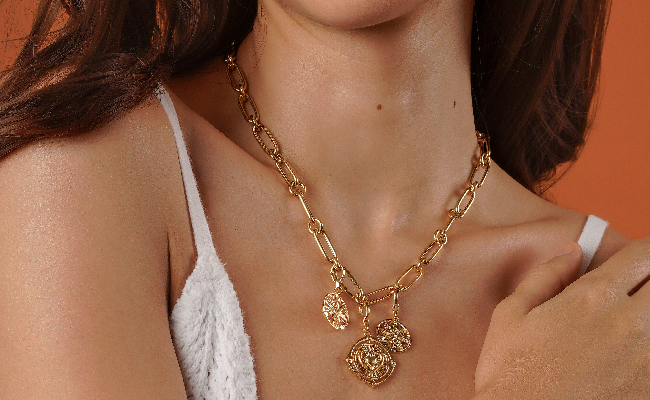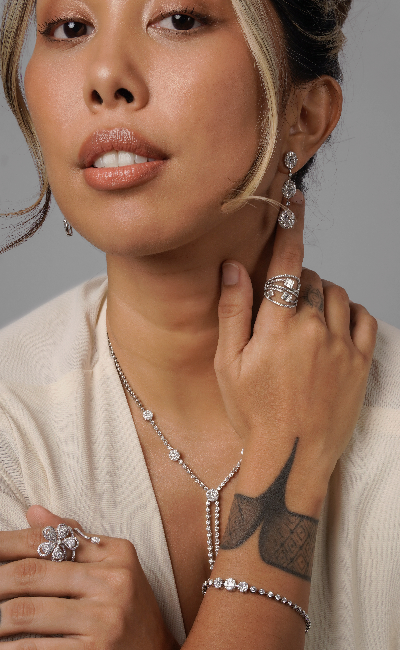
Formation of the Queen of Jewels – Pearls, explained
Pearls are fascinating gems. Contrary to the belief that they are just round and symmetrical, they have a variety of shapes, sizes, and colors. Apart from round, there are off-round, drop, and baroque shapes as well.
Each variety of pearls requires a specific duration for its formation. However, in every instance, the minimum time required for pearl development is six months. Occasionally, this process can extend up to 24 months.
Now, let’s dive into the unique formation of pearls, one step at a time.
Oyster Selection
Choosing the right oyster or mussel for pearl production involves two main methods. First, mollusks can be collected from the wild, like in Australia and French Polynesia, and grown to a suitable size for pearl production.
Second, juveniles can be produced through artificial propagation in hatcheries or spat collection programs, where appropriate substrates are deployed for larval recruitment. It takes about a year and a half for pearl oyster larvae to reach the right size for pearl production, while freshwater mussels can be ready within a year.
For successful farming, the aquatic environment must be clean, with suitable water temperature, and free of harmful organisms, with minimal fouling and predation.
Nucleus Implantation
Nucleus Implantation is crucial in cultured pearl production. A small piece of mantle tissue called a graft, is taken from a donor oyster and implanted with a shell bead into a recipient oyster's gonad for marine pearls.
For freshwater pearls, only the mantle graft is needed. Technical challenges exist in growing beaded pearls in freshwater mussels due to their physiology. Conditioning before implantation and proper post-operative care enhance survival and tissue retention. Factors like oyster size, age, nucleus size, and grafting method affect survival and retention rates.
Nurturing
After implantation, oysters/mussels require two weeks of careful nurturing in a resting zone to minimize mortality and nucleus rejection. They are then returned to calm ocean waters at a depth of 2–3 meters. Optimal water temperature is crucial for survival and nacre secretion, with Pinctada maxima (silver-lipped pearl oyster) secreting nacre optimally at 25–30°C. In Pinctada margaritifera (back-lip pearl oyster), graft tissue forms a pearl sac covering the nucleus within 14 days, but nacre secretion starts around day 32. Marine pearls are typically harvested 1–2 years after implantation, while freshwater pearls may take 1–5 years depending on the method and species.
Harvesting
Harvesting pearls in winter or when the water temperature is low results in slower nacre secretion, yielding pearls with detailed, smooth, and lustrous surfaces.
Akoya and South Sea pearls grow within host oysters' gonad tissue, limiting the number of pearls per harvest. Oysters producing high-quality South Sea pearls often receive a new, larger bead and undergo another 2–3 years of growth for subsequent pearl cycles. This method can produce up to four pearls from one oyster, with improvements in size and shape reported in "second-graft" pearls from Pinctada margaritifera (black-lip pearl oyster).
Freshwater pearls grow in the mantle, with each lobe capable of accommodating up to 20 grafts. Freshwater mussels typically yield over 10 pearls per mussel, surpassing marine oysters in pearl production.
Pearl Processing
Over 90% of cultured pearls don't meet jewelry standards due to color variations and surface defects. Techniques like screening, degreasing, and bleaching are commonly used to enhance their quality. These processes can significantly improve color and surface texture, increasing their value. While fine-quality cultured pearls are used in jewelry, low-value pearls may be processed for medicinal or cosmetic purposes.
South Sea pearls typically undergo minimal treatment, mainly washing and polishing, though Japanese pearl companies may apply additional treatments for color and luster enhancement. Mechanical polishing and the use of solvents and materials like beeswax can further enhance pearl luster.
Truly, the creation of pearls stands as a remarkable marvel of nature's artistry. It's a testament to the meticulous craftsmanship of time itself, where patience and quality intertwine to yield treasures beyond compare. Just as nature meticulously shapes each pearl, so does Miladay by infusing significance into every piece, each crafted with utmost care and reverence. Each pearl, a radiant symbol of elegance and grace, reflects not just beauty, but a story of dedication and refinement. In the hands of Miladay, these jewels are not just adorned but cherished, echoing the timeless allure of nature's masterpiece.













